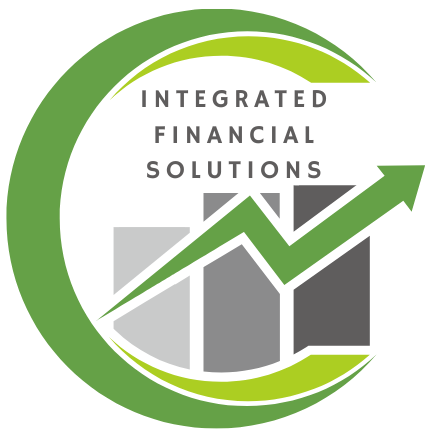You’ve crunched every number, tracked every receipt, and still feel like Uncle Sam’s getting more than his fair share. What if I told you there are five powerful tax write-offs many business owners overlook—each perfectly legal, IRS-approved, and capable of saving you thousands every year?
No, it’s not too good to be true. It’s just smart tax strategy. Below, we’ll unpack each write-off, explain who qualifies, and show you exactly how to claim them without raising red flags.
Who This Is For
- Solopreneurs & freelancers looking for every deduction possible
- Small business owners eager to reduce taxable income
- Self-employed professionals frustrated by high tax bills
- Anyone ready to go beyond the obvious (home office, mileage) and unlock hidden savings
1. Section 179 Deduction: Write Off Equipment Now
What it is: Under Section 179 of the tax code, you can deduct the full cost of qualifying equipment and software in the year you place it into service—up to annual limits ($1.16 million for 2024).
Why it seems too good to be true: Most depreciation schedules force you to spread that deduction over several years. With Section 179, you front-load the entire expense in year one.
Who qualifies:
- Businesses purchasing or financing new or used tangible property (machinery, computers, office furniture)
- Software that’s purchased, leased, or used
Action steps:
- Identify purchases by December 31.
- File Form 4562 with your tax return.
- Track limits—don’t exceed total caps or phase-out thresholds (beginning at $2.89 million of purchases).
Pitfall to avoid: Mixing business and personal use. Only the business-use percentage counts. Keep receipts and use logs if you share assets.
2. Self-Employed Retirement Plans: Defer Today, Save Tomorrow
What it is: Contributions to qualified retirement plans (SEP IRA, Solo 401(k), SIMPLE IRA) reduce your taxable income now and grow tax-deferred.
Why it seems too good to be true: You’re socking away money for retirement and shaving your current tax bill—often thousands in savings.
Who qualifies:
- Sole proprietors, partnerships, and single-member LLCs
- Business owners with zero W-2 employees (for Solo 401(k))
Action steps:
- Choose the right plan based on your income and number of employees.
- Make contributions by your tax-filing deadline (including extensions).
- Report on Form 1040 Schedule 1 (for SEP IRA) or Form 5500-EZ (for Solo 401(k) if plan assets exceed $250K).
Pitfall to avoid: Missing contribution deadlines. SEP IRA can be funded up to the tax-return due date, but Solo 401(k) employee deferrals must happen by December 31.
3. Self-Employed Health Insurance Premiums: Deduct What You Pay
What it is: If you’re self-employed and pay health insurance premiums for yourself, your spouse, dependents, and adult children under age 27, you can deduct those premiums above the line on Form 1040.
Why it seems too good to be true: You reduce your adjusted gross income (AGI) before calculating other deductions, maximizing every tax advantage.
Who qualifies:
- Self-employed individuals with net profit
- You cannot be eligible for coverage under a spouse’s employer plan
Action steps:
- Keep premium invoices and proof of payment.
- Enter the total on Schedule 1, Line 17 of Form 1040.
- Coordinate with any Health Savings Account (HSA) strategy for even greater benefits.
Pitfall to avoid: Claiming the deduction if you’re eligible for employer-sponsored coverage (even if you don’t enroll).
4. Home Office Deduction (Simplified Method): Up to $1,500 in Instant Savings
What it is: The IRS’s simplified home office method lets you deduct $5 per square foot of a dedicated home-office space (up to 300 sq ft), for a maximum of $1,500, without detailed expense tracking.
Why it seems too good to be true: Traditional home office deductions require pro-rata calculation of mortgage interest, utilities, and repairs. This method cuts through the complexity.
Who qualifies:
- Use a portion of your home exclusively and regularly for business
- That space must be your principal place of business
Action steps:
- Measure your dedicated office space.
- Multiply square footage by $5.
- Report on Form 8829 or directly on Schedule C (Line 30).
Pitfall to avoid: Claiming a space that’s used for personal purposes (e.g., guest bedroom, family room).
5. Qualified Business Income Deduction (20% QBI): Pass-Through Profit Relief
What it is: Under Section 199A, many owners of S Corps, partnerships, and sole proprietorships can deduct up to 20% of their qualified business income—even after all other deductions.
Why it seems too good to be true: It’s like getting a 20% discount on your taxable profit—without buying anything.
Who qualifies:
- Pass-through entities (sole proprietors, S Corps, LLCs taxed as partnerships)
- Income must fall under threshold limits ($182,100 single / $364,200 married in 2024) for full 20% benefit
Action steps:
- Calculate QBI on your business profits.
- Complete Form 8995 (or Form 8995-A for more complex situations).
- Include on Schedule 1 of your Form 1040.
Pitfall to avoid: Assuming every pass-through owner qualifies. Certain service businesses (health, law, consulting) phase out at higher incomes.
Putting It All Together: Your Action Plan
- Audit your past year’s return for missed opportunities.
- Estimate your savings for each write-off—this helps prioritize.
- Implement systems: automated bookkeeping, receipt capture, and regular reviews.
- Consult a tax strategist before year-end to lock in opportunities.
- Document everything: keep receipts, logs, and clear records for each deduction.
Final Thoughts
These five “too good to be true” write-offs are fully legal, widely available, and often overlooked by busy business owners. By mastering Section 179, retirement contributions, health insurance deductions, the simplified home office method, and the QBI deduction, you can dramatically reduce your taxable income and reinvest those savings back into your business.
Don’t let complex rules scare you away. With the right planning—and a little professional guidance—you can claim every dollar you deserve.
Ready to unlock these write-offs and save big on your next return? Let’s build a tax strategy that maximizes your savings and powers your growth. Click on Contact in the top right corner to get started!


University of Leicester Botanic Garden is a serene study spot.
Also visit my webpage: universal universal remote